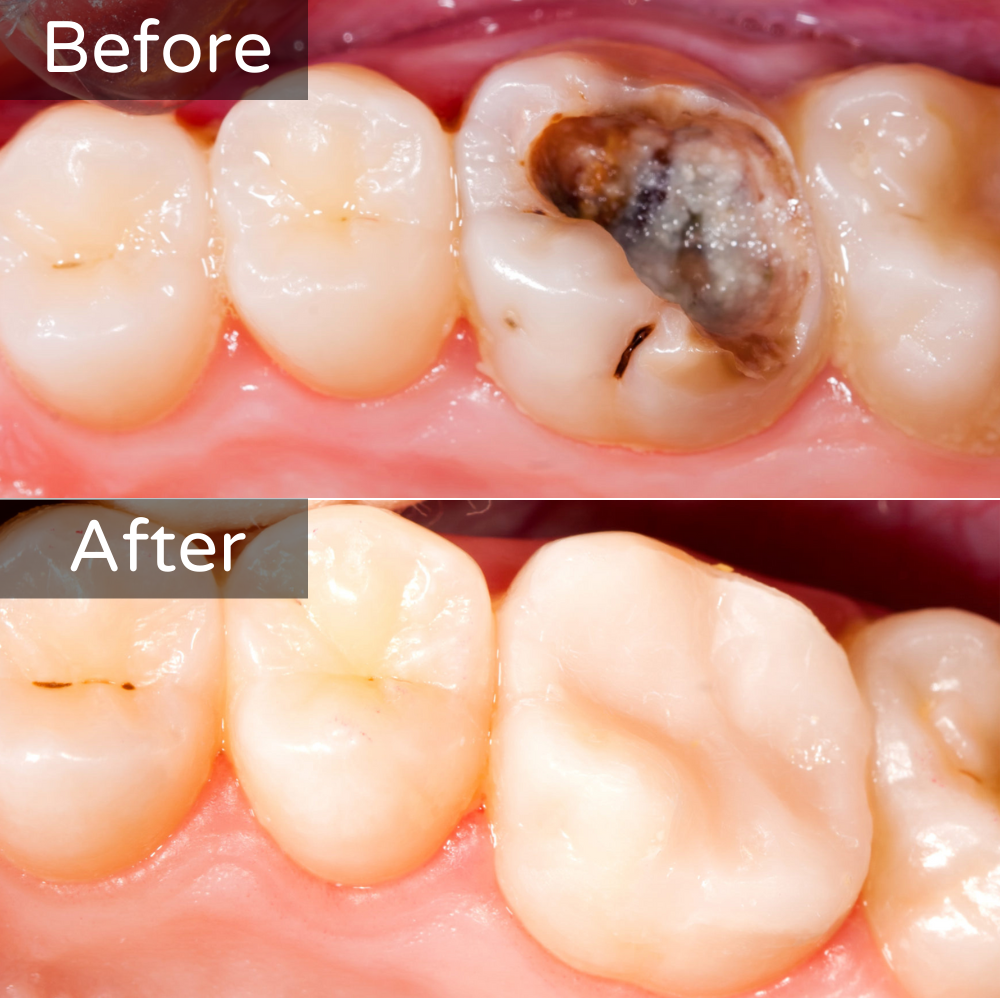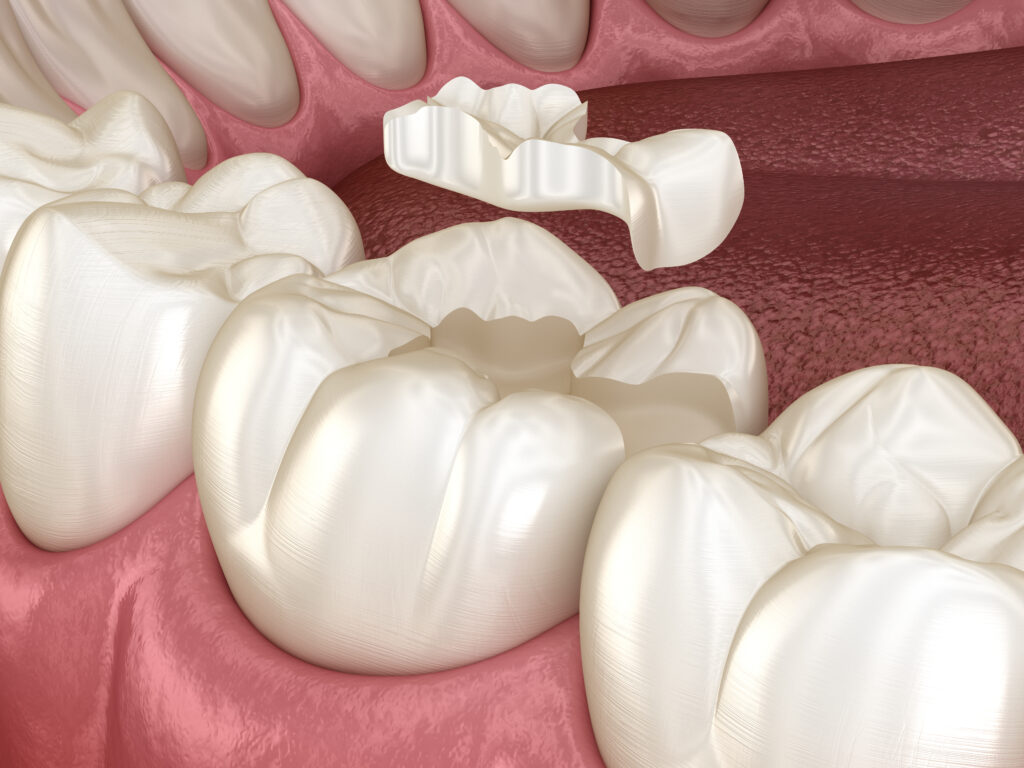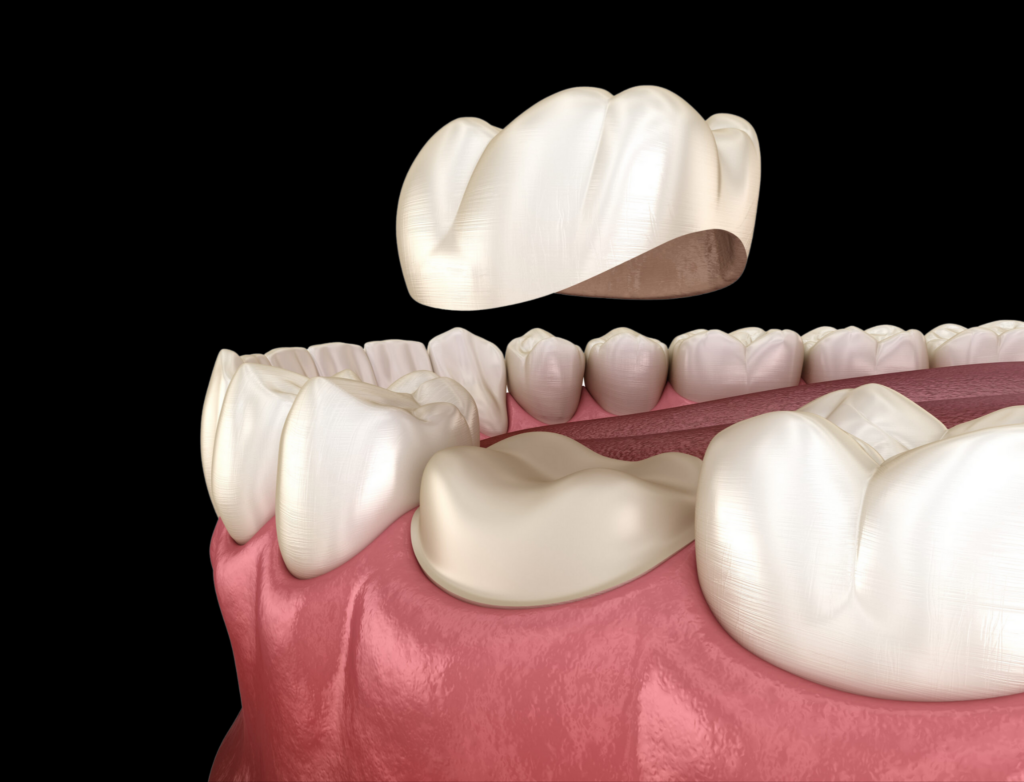Menu
Composite (tooth coloured) fillings are very popular and most recommended fillings because of their aesthetically pleasing quality, which offers a more natural look. The material comes in many different shades, and even in different translucencies, so the restoration is a perfect match to your teeth. Many patients have chosen to replace their existing amalgam fillings to composite, leaving their teeth beautifully appealing.
However, your teeth will be assessed on an individual basis and the best restorative material will be discussed.
White fillings are commonly used to repair cavities in front teeth and to fill small to medium sized areas of decay in your back teeth. This material is pretty strong but is not so suitable for filling larger areas of decay in back teeth as these are subjected to heavy chewing forces. These larger filings are called inlays and onlays.
An inlay replaces the central chewing surface of a back tooth, but an onlay will replace a larger area which includes the central chewing area plus one or more of the cusps. Tooth cusps are the raised points you can see on the edges closest to your cheeks and tongue.
Inlays and onlays can be made from resin, gold or porcelain. In today’s modern porcelain can easily withstand the forces created during chewing and of course they look beautiful and natural.
Inlays and onlays cover larger surface areas and are constructed from more robust materials in a lab, prior to cementation in your mouth. They undergo less shrinkage and hence can last longer, especially when a larger quantity of tooth surface is missing.
They will require 2 visits as they need to be made in a dental laboratory.
The dentist will prepare your tooth before scanning it with a very small camera so there is no need to have any impressions. This information is then sent to the laboratory who will fabricate the inlay/onlay . Once it is completed it will be hand finished and polished before being fitted and cemented in your mouth.
When you find that your old fillings are starting to deteriorate, consider white fillings as a suitable alternative replacement.
Conventional fillings tend to shrink when they dry and can produce small gaps between the filling and the tooth. These micro holes may, in certain cases, lead to discomfort and decay over time. As inlays and onlays are made from stronger materials in a lab and cemented before being placed inside your mouth, they are less prone to shrinkage. Thus, they can last longer, especially when a larger quantity of tooth surface is missing. They will require 2 visits to enable the lab to construct the inlay, or onlay, after the tooth has been prepared.
Our practice offers a finance option for all specialists and extensive courses of treatment. Interest-free options are available between 6 and 12 months. For more information, click below or call us on 01264 771114.

Inlays

Onlays

The surgery has been established for thirty years and is a busy, thriving private practice offering excellent cosmetic and routine dentistry for the whole family. The emphasis of care is on quality and an ethical approach promoting education and prevention. Care for all the generations is a priority and high standards of cross infection control are paramount.
We’re offering free consultations, complimentary iTero scans, and exclusive treatment plans tailored just for you. Curious about how Invisalign can transform your smile? Book a call today and take the first step towards straighter, healthier teeth.
💡 Limited-time offers and promotions available at selected times — ask us for details!